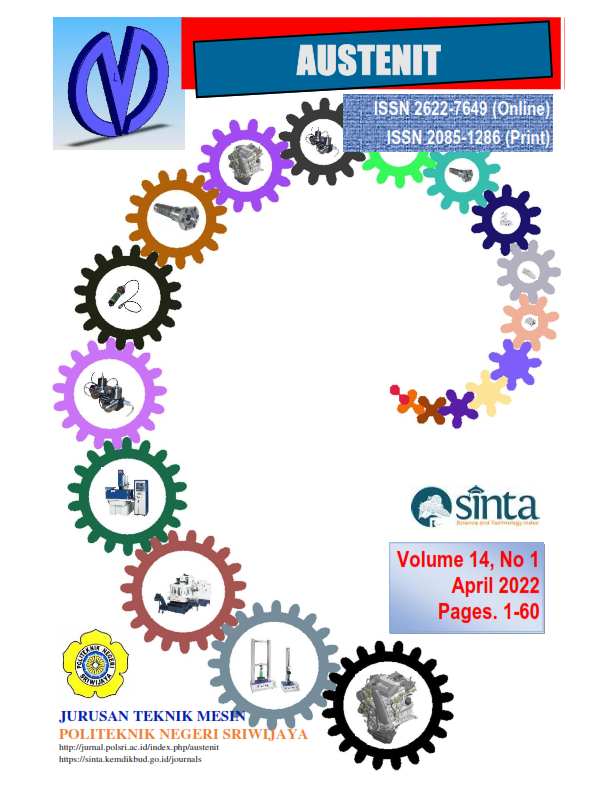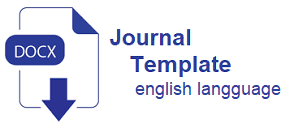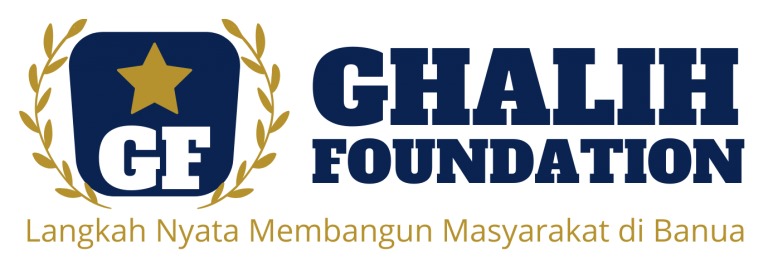RANCANG BANGUN MESIN PENGIRIS TEMPE OTOMATIS DENGAN PENGATURAN KETEBALAN
DOI:
https://doi.org/10.53893/austenit.v14i1.4521Keywords:
Tempe, Slicer, Stepper motor, arduino, automaticAbstract
Tempe is a traditional Indonesian food that can be processed into various derivative food products, including chips and mendoan. Many MSMEs have developed tempe chip products, but the tempe slicing process is still done manually. The manual process has the disadvantage of taking a long time, requiring operators, and inconsistent results. In this study, an automatic tempe slicing machine was developed. The developed machine uses a control system so that it can adjust the thickness of the slices by manipulating the rotational speed of the driving motor. The mechanical design of the tempe pushing system and hopper causes the process to take place continuously. Tests to determine the performance of the machine in producing tempe slices, and to determine the capacity of the machine have been carried out. The results show that the machine can slice tempe well starting from a thickness of 2 mm. The test results also show that the deviation of the thickness of the slices is not significant, which is between -2.2% - 2.5%. Machine capacity depends on the thickness of the slices. For 3 mm slices, the machine capacity is 22 29 kg/hour. Meanwhile, the machine capacity for slice thickness of 5 mm and 7 mm is 31.85 kg/hour and 38.96 kg/hour, subsequently.
Downloads
References
Eko, A. (2021). Perencanaan Mesin Pengiris Kentang Dengan Kapasitas Produksi 1,2 Ton/Jam. TEKNOTIKA, 1(1), 20-28.
(https://ejournal.ftiunmabanten.ac.id/teknotika/article/download/86/72)
Elgasim, E. A. and Kennick, W. H. (1980). Effect of pressurization of preâ€rigor beef muscles on protein quality. Journal of Food Science, Vol. 45, No. 5, pp: 1122-1124. (https://doi.org/10.1111/j.1365-2621.1980.tb06501.x)
Indawati, N. (2021). Pelatihan Pemasaran Online Pada Pelaku Usaha Keripik Tempe Dan Keripik Buah Desa Sukorejo Kecamatan Sidayu Kabupaten Gresik. Jurnal ABDI: Media Pengabdian Kepada Masyarakat, Vol. 7 No. 1, pp: 18-22.
Luthfi, F., Munir, A.P., dan Panggabean, S. (2016). Design and Construction of Tempeh Slicer. J. Rekayasa Pangan dan Pertanian, Vol. 4, No. 4, 2016. (https://jurnal.usu.ac.id/index.php/jrpp/article/view/Fauzan%20Luhfi/6841)
Marsetiya, U.D. (2019). Penguatan Aspek Manajemen Produksi dan Kualitas Tempe Pada UKM Tempe. JPPM (Jurnal Pengabdian dan Pemberdayaan Masyarakat), Vol. 3, No. 1, pp: 133-140.
Nugroho, Y.A., Al Faritsy, A.Z., & Sugiharto, A. (2019). PKM Diversifikasi Produk Olahan Tempe Dan Peningkatan Daya Saing Pada Kelompok Wanita Tani Rahayu Bantul. Jurnal Anadara Pengabdian Kepada Masyarakat, Vol. 1, No. 2. (http://jurnal.una.ac.id/index.php/anadara/article/view/1000)
Pinasti, L., Nugraheni Z., & Wiboworini, B. (2020). Potensi tempe sebagai pangan fungsional dalam meningkatkan kadar hemoglobin remaja penderita anemia. AcTion: Aceh Nutrition Journal, Vol. 5, No. 1, pp:19-26. (10.30867/action.v5i1.192)
Priyanto A.D. dan Djajati. S. (2018) Pelatihan Diversifikasi Olahan Tempe Pada Pengrajin Tempe Di Desa Parerejo Kecamatan Purwodadi Kabupaten Pasurusan. Journal of Science and Social Development, Vol. 1, No. 2, pp.46-52.( https://www.journal.unusida.ac.id/index.php/jssd/article/view/166/121)
Putra, F. K. Safril, S., Leni, D. & Venny, YH, (2019). Rancang Bangun Mesin Pengiris Singkong. Jurnal Teknik Mesin, 12(1), 19-23. (https://ejournal2.pnp.ac.id/index.php/jtm/article/view/196)
Raswanti, H., Aditya, A.O., Aisyah S.R., Alham A. & Hanidah, I.I. (2019). Upaya Peningkatan Konsumsi Tempe Melalui Diversifikasi Olahan. Agricore: Jurnal Agribisnis dan Sosial Ekonomi Pertanian Unpad, vol. 3, No. 1.(https://doi.org/10.24198/agricore.v3i1.17804)
Sajuli, M. S. & Hajar, I. (2017) Rancang bangun mesin pengiris Ubi dengan Kapasitas 30 kg/jam. INOVTEK POLBENG, 7(1), 66-70. (https://doi.org/10.35314/ip.v7i1.158)
Trianasari, E., Pamuji, D. R., Prayogo, G. S. dan Rahayu, N. S. (2017). Pemanfaatan Teknologi Tepat Guna Mesin Pengiris Tempe Untuk Meningkatkan Produktifitas Umkm Keripik Tempe Di Desa Siliragung Kecamatan Siliragungâ€. Jurnal Rotor. Vol. 10, No. November, pp. 64–66. (https://doi.org/10.19184/rotor.v10i2.6420)
Utomo, A.P. dan Nurlaila, Q. (2021). Perancangan Mesin Pengiris Tempe Semiotomatis Dengan Arah Pengirisan Horizontal. PROFISIENSI: Jurnal Program Studi Teknik Industri, Vol 9, No. 2, pp: 252-261. (https://doi.org/10.33373/profis.v9i2.3690)
Wijianti, E.S., Novriyanda, N. dan Saparin, S. (2020). Rancang Bangun Mesin Pengiris Bawang Merah Sistem Mata Pisau Rotari Sumbu Vertikal. AUSTENIT, 12.2: 34-37. (https://doi.org/10.5281/zenodo.4547834)
Wulandari, W., Pratama, B.W., & Yusuf, N.A. (2021) Mesin Pengiris Tempe Semi Otomatis Sistem Pisau Berputar Untuk Peningkatan Roduktivitas UMKM Keripik Tempe Ardani Malang. Jurnal Aplikasi Dan Inovasi Ipteks" SOLIDITAS"(J-SOLID), Vol. 4 No.2, pp.121-128. (https://doi.org/10.31328/js.v4i2.2761)
Yuniarti, R., Azlia, W., & Sari, R.A. (2015). Penerapan sistem Hazard Analysis Critical Control Point (HACCP) pada proses pembuatan keripik tempe. Jurnal Ilmiah Teknik Industri, Vol.14, No.1, pp: 86-95. (https://doi.org/10.23917/jiti.v14i1.627)
Downloads
Published
How to Cite
Issue
Section
License
Copyright (c) 2022 Authors and Publisher

This work is licensed under a Creative Commons Attribution-ShareAlike 4.0 International License.
The Authors submitting a manuscript do so on the understanding that if accepted for publication, Authors retain copyright and grant the AUSTENIT right of first publication with the work simultaneously licensed under a Creative Commons Attribution-ShareAlike License that allows others to share the work with an acknowledgment of the work's authorship and initial publication in this journal.
AUSTENIT, the Editors and the Advisory International Editorial Board make every effort to ensure that no wrong or misleading data, opinions or statements be published in the journal. In any way, the contents of the articles and advertisements published in AUSTENIT are the sole responsibility of their respective authors and advertisers.















